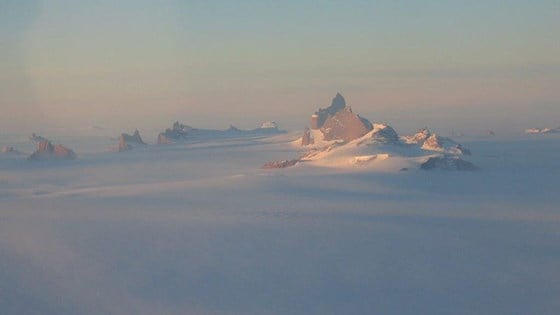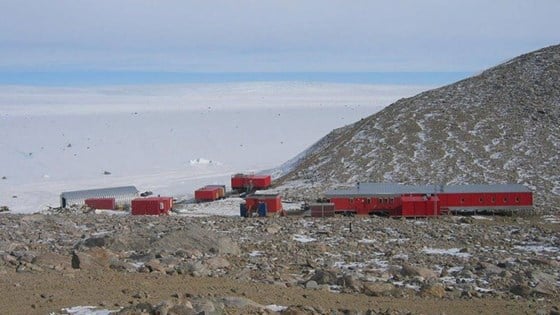The Antarctic
Article | Last updated: 16/12/2014
The Antarctic contains some of the last vast undisturbed areas of nature in the world. Plants, animals, ecosystems and cultural heritage in the Antarctic face an unrelenting growing pressure from traffic, environmental toxins and climate change. The cooperation under the Antarctic Treaty is critical to safeguarding the preservation of the natural environment and cultural heritage.
Preserving the almost untouched natural environment in the Antarctic is one of the main pillars of the international cooperation under the Antarctic Treaty.
Environmental values under pressure
The Antarctic contains some of the last vast undisturbed areas of nature and wilderness in the world. A number of animal species are endemic, i.e. they are not found anywhere else in the world. The land and freshwater ecosystems consist of few plant and animal species and are among the world's simplest. There is a rich biological diversity in the Southern Ocean, ranging from microbes to seals and whales.
There are plenty of cultural heritage sites in the Antarctic from Norwegian and other countries' activities.The Antarctic is therefore important from the perspective of polar history.
Plants, animals, ecosystems and cultural heritage in the Antarctic face an unrelenting growing pressure from human activities on the polar continent and in the surrounding ocean areas, and from long-distance pollution. More tourists and new research stations lead to more traffic.
So far, the Antarctic has been little affected by pollution, but high levels of long-distance insecticides and pesticides have been found in the South Polar skua on Queen Maud Land. Climate change and ocean acidification will change the conditions for life for plants and animals and may entail major changes to the marine ecosystems. A warmer ocean allows new species to establish themselves and threaten local species.
Human activities in the Antarctic are not very extensive. Nonetheless, the growing scope and intensity of current activities, in conjunction with climate change, do provide a reason to keep an eye on the aggregate environmental consequences of the activities in the Antarctic.

International cooperation in the Antarctic
The Antarctic Treaty entered into force in 1961 and sets out the legal framework for operations and environmental protection in the Antarctic. The treaty has been ratified by fifty countries and the Secretariat is based in Buenos Aires. The Antarctic Treaty ensures that the entire treaty area south of 60˚S latitude shall be devoted to peace and science.
In addition, 37 countries have signed The Protocol on Environmental Protection to the Antarctic Treaty, which introduced environmental protection as one of the main pillars in the cooperation under the treaty. The protocol establishes stringent environmental requirements on all human activities in the treaty area and prohibits any activity relating to mineral resources for 50 years. Since entering into force in 1998, the environmental protocol has contributed to a number of measures being implemented to protect the substantial environmental values of the Antarctic.
Fishery activity in the Southern Ocean is regulated through the Convention on the Conservation of Antarctic Marine Living Resources (CCAMLR), which was ratified by Norway and 35 other parties. Together with the Convention for the Conservation of Antarctic Seals (1972), CCAMLR and other agreements form the Antarctic Treaty System. Norway has also ratified the international Agreement on the Conservation of Albatrosses and Petrels (2004).
Norway's follow up of the environmental regulations in the Antarctic
The Environmental protocol to the Antarctic Treaty has been included in Norwegian legislation in separate regulations relating to the protection of the environment and safety in Antarctica, which will ensure that Norwegian activities in the Antarctic comply with the Environmental protocol. The Norwegian Polar Institute has been given the authority to follow up the regulations.
CCAMLR is followed up through separate regulations that regulate fishing activities with Norwegian vessels in the Antarctic. The Directorate of Fisheries has been given the authority under these regulations.
Cooperation under the Antarctic Treaty
Under the Treaty a cooperation system has been established with an annual meeting, the Antarctic Treaty Consultative Meeting (ATCM). In addition, a separate environmental committee has been founded – The Committee for Environmental Protection (CEP) – which offers advice and recommendations to the ATCM on matters pertaining to the environment. Norway has an active role in the cooperation under the Antarctic Treaty and the Environmental protocol. Norway's delegation to the ATCM is led by the Ministry of Foreign Affairs. The Ministry of Climate and Environment and the Norwegian Polar Institute participate in the ATCM delegation and represent Norway in the Environmental committee.
The Ministry of Climate and Environment and the Norwegian Polar Institute also participate in the Norwegian delegation to the annual meeting under the Convention on the Conservation of Antarctic Marine Living Resources, at which marine conservation areas are on the agenda. Norway actively supports the work of establishing marine conservation areas, which are important instruments for protecting natural values and the ecosystems in the Southern Ocean.
Norwegian research in the Antarctic
Norway is an active and prominent nation in the international research cooperation in the Antarctic. The Norwegian Polar Institute is the main Norwegian research organisation. The Institute runs the all-year research station Troll in Queen Maud Land, and operates expeditions in the Southern Ocean. Our research contributes to increasing the knowledge base for international environmental protection work in the treaty area. Through our climate research we also contribute to improving knowledge on the Antarctic's key role in the global climate system. The importance of this extends well beyond the Antarctic.

Documents/resources:
- The Antarctic and Bouvet (Norwegian Polar Institute)
- The Antarctic Treaty Secretariat